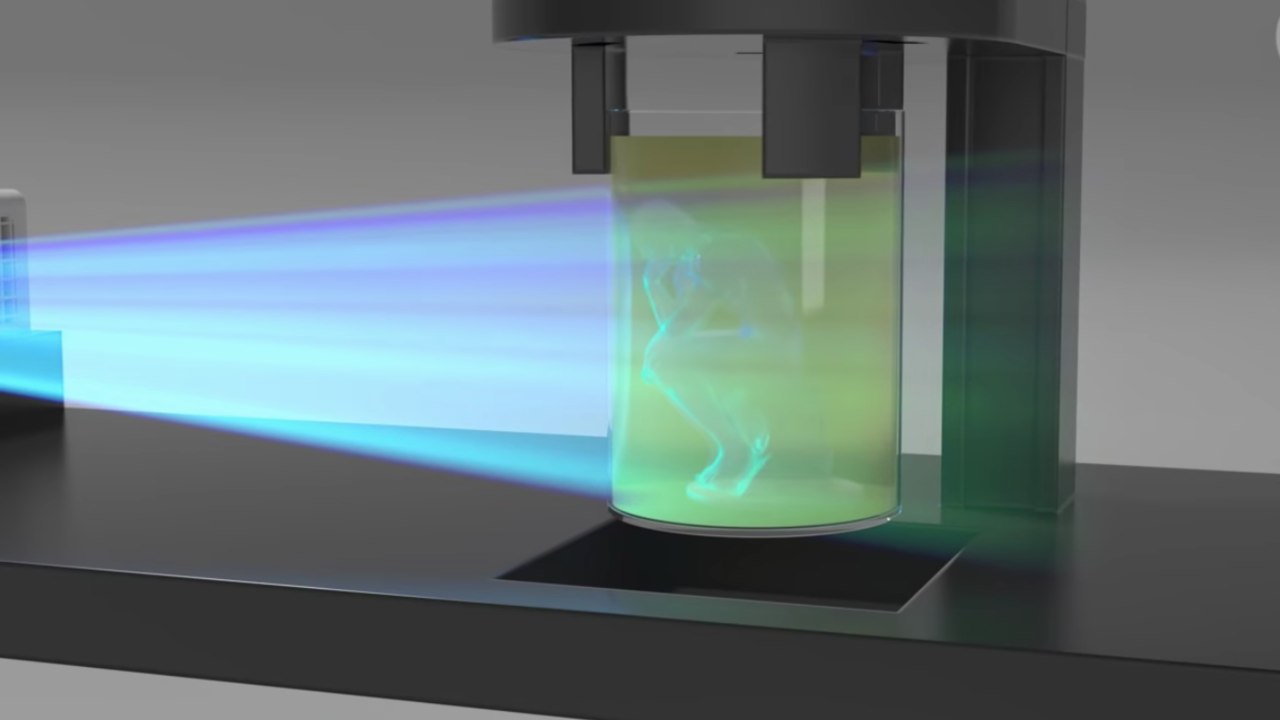For a fairly new and exciting technology, 3D printers at work can be a pretty uninspiring sight. The machine cranks out ink audibly and builds objects layer-by-layer, which is still pretty cool, but that world could certainly do with an upgrade. And now it has one – and they’re calling it ’the replicator’. Researchers at the University of California, Berkeley have built a printer that can create objects in one shot using light instead of ink. The printer first scans an object from multiple different angles and projects the scan onto a tube using different intensities of light beams. The tube is filled with a synthetic resin that goes solid when it is hit with light of a specific intensity. Amazingly, the team of researchers demonstrated the super-fast and super-cool 3D printer by building a mini-figurine of the popular “The Thinker” statue.
The process also works with a simple slide projector, according to a Nature
report. Images of an object that were captured from multiple different 2D angles and projected onto the resin-filled tube also did the trick – the object was recreated in its 3D, light-printed resin form. “The amount of light received by any point (in the tube of resin) can be independently controlled,” Hayden Taylor, one of the study’s authors at the University of California, Berkeley,
told Science. “Where the total amount exceeds a certain value, the liquid will become solid.” The resin absorbs packets of light, called photons, and polymerizes or hardens when it crosses a certain threshold. These links make the light-printed object look almost like solid plastic once complete, and the remaining liquid is removed. [caption id=“attachment_6030981” align=“alignnone” width=“1280”] The object is technically light-printed using a resin sensitive to a specific wavelength of light. Image credit: Nature/University of California, Berkeley.[/caption] This new way of 3D printing also leaves room for more flexibility. It can print an object enclosing another one, for instance, and leaves the printed object with a much smoother surface than conventional 3D printers do today. The printer is nicknamed “the replicator” after the machines in Star Trek that can materialize pretty much any inanimate object inside a tube. The study was
published in the journal Science this week and could rapidly revolutionize the world of 3D-printed medicine and manufacturing.


)
)
)
)
)
)
)
)
)



